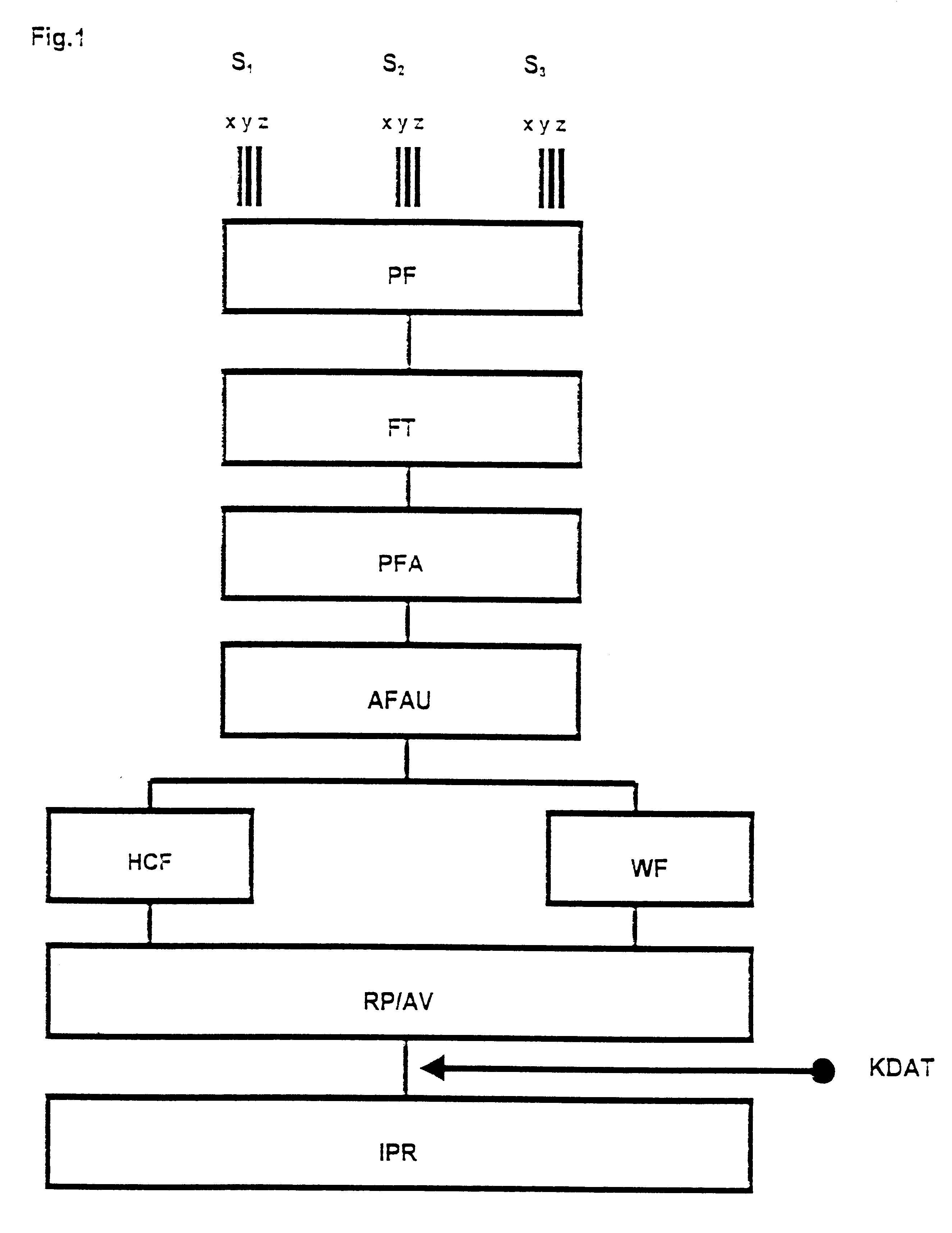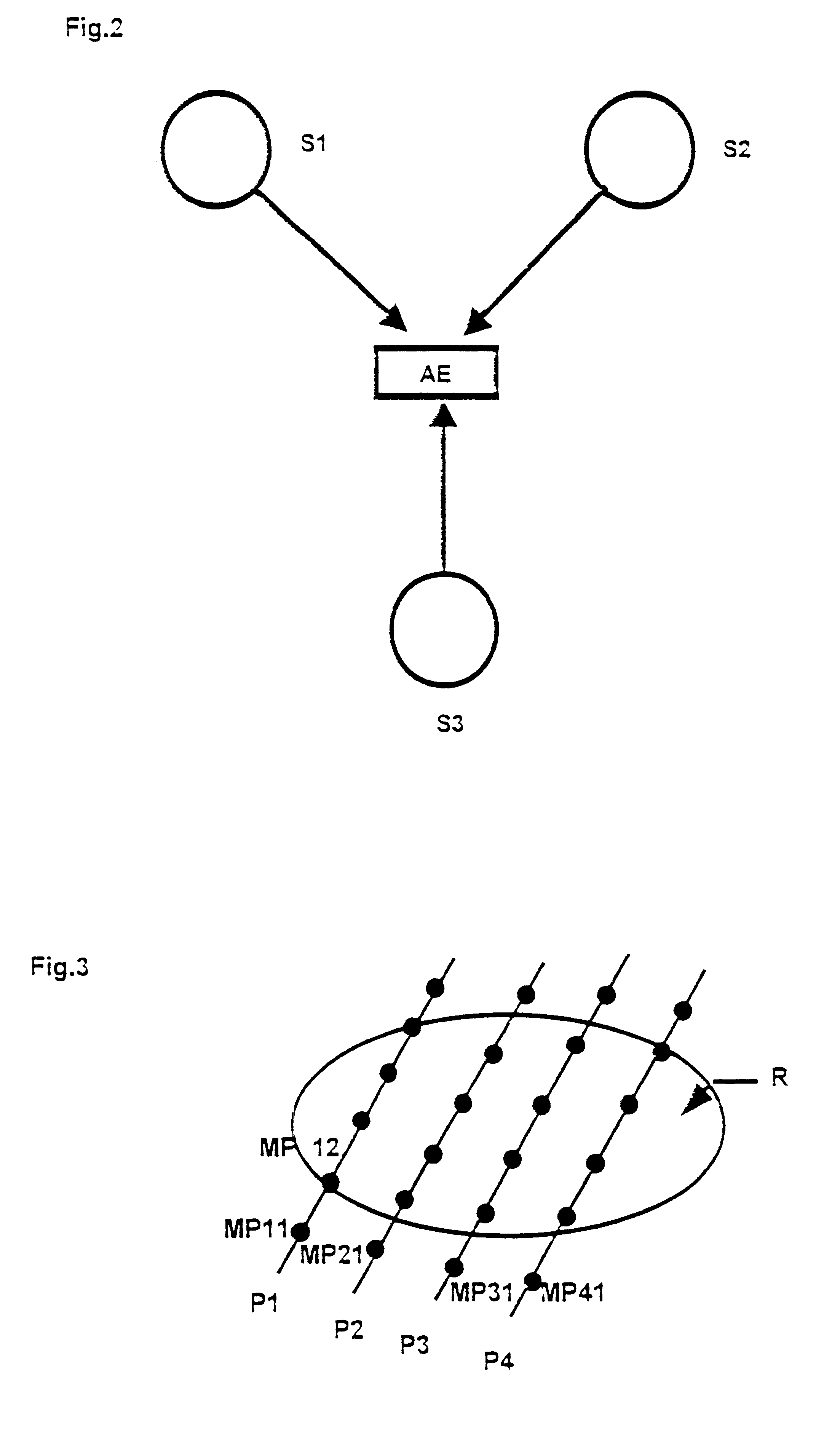Method for direct hydrocarbon reservoir detection and delineation by low frequency acoustic spectroscopy
a low frequency acoustic spectroscopy and hydrocarbon reservoir technology, applied in the direction of gravity wave measurement, geological measurement, reradiation, etc., can solve the problems of inability to make definite statements regarding the existence of deposits and their geographic composition, the detection of such deposits, in particular oil and gas deposits, and the accident of detection
- Summary
- Abstract
- Description
- Claims
- Application Information
AI Technical Summary
Benefits of technology
Problems solved by technology
Method used
Image
Examples
Embodiment Construction
Phase 1: The measuring data are picked up by the sensors S1, S2, S3 by means of the arrangement shown in FIG. 2, and are recorded as digital information in the recorder AE. Recording takes place simultaneously for all sensors S1, S2, S3 and is separated into the components x, y, z.
The recording time is on the order of several minutes for each individual measurement.
In accordance with FIG. 3, the measurements take place at the measuring points Mij along the profiles Pi.
Phase 2: Following processing in a correlation filter (PF), the measured data or primary data are subjected to a frequency analysis (FT), and following the comparison of phase, frequency and amplitude (PFA), the frequency and amplitude values are determined from the correlated data and transferred to the appropriate windows, the hydrocarbon window (HCF) and the water window (WF).
Phase 3: A reservoir profile is produced from the received data, and the course of the amplitude ratio of the maxima from the separate frequen...
PUM
 Login to View More
Login to View More Abstract
Description
Claims
Application Information
 Login to View More
Login to View More - R&D
- Intellectual Property
- Life Sciences
- Materials
- Tech Scout
- Unparalleled Data Quality
- Higher Quality Content
- 60% Fewer Hallucinations
Browse by: Latest US Patents, China's latest patents, Technical Efficacy Thesaurus, Application Domain, Technology Topic, Popular Technical Reports.
© 2025 PatSnap. All rights reserved.Legal|Privacy policy|Modern Slavery Act Transparency Statement|Sitemap|About US| Contact US: help@patsnap.com



